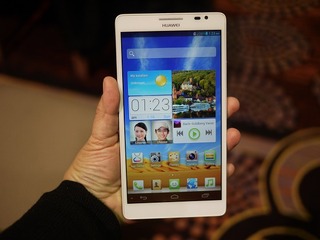Perseverance: From running out of money to an IPO - StubHub comes back strong
In the post-Covid drive for live events, ticket platforms are jumping at the opportune market time
Read more...
(Updated with comment from Flurry)
Like so many people, I've become addicted to my phone over the last few years. To the point where I actually think I need to start cutting back. It's pretty standard at this point to see everyone on their phones, so it's pretty obvious that mobile usage is still growing, though that growth is starting to slow down quite a bit.
Overall app usage grew by 58% in 2015, according to a report out from Flurry on Tuesday, meaning that it has now grown for at least the last seven years. App usage is a user opening an app and recording a session.
That is big growth. It's so big that Flurry actually calls it "stunning" and "rare in mature industries," but there is an important caveat: it is down significantly from the last two years, when mobile app usage grew by 103 percent in 2013 and then 76 percent in 2014.
Another important factor to consider is that growth is apparently coming from existing users rather than new ones, accounting for an estimated 40 percent of the increase in usage. That is up from 10 percent in 2013 and 20 percent in 2014.
Basically, people who are already on mobile are becoming addicted to it, as I said earlier. I'm not sure that this is a good thing for society, but for anyone in the mobile app world it's great news.
When broken down by category, one stood out above all the rest: personalization apps, which includes Android lock-screens to Emoji keyboards.

In fact, emojis are driving a lot of the 344 percent increase in sessions. We've seen a lot of mobile messaging apps grow rapidly in the last few years, including Facebook Messenger, which was the fastest growing app in 2015, and WhatsApp, which is gaining on one billion total active users.
Even Kim Kardashian got into the action, releasing her own emoji app last month, which immediately went to the top of the App Store.
The other two categories that saw major growth were News and Magazine apps, which grew 141 percent, and Productivity apps, which saw 119 percent growth.
The increase for News and Magazine apps shows "a shift in media consumption from television and PCs to smartphones in general, and phablets in particular," Flurry wrote, while the growth in Productivity shows people turning to their devices for all of their computing needs, including email.
There was only one mobile app category that did not show growth in 2015, and that was gaming, which lost 1 percent year over year.
"Gaming is the most mature category on mobile, so it makes sense that its growth has slowed. However, we believe there are three key factors contributing to its decline. First, a lack of new hits -- the major titles continue to dominate the top grossing charts and haven’t made room for a major new entrant. It’s well documented that its harder and harder for indies game developers to break out because the cost of user acquisition is so high," Jarah Euston, Yahoo’s VP of Growth, explained to me.
"Additionally, there's a growing trend of users becoming the game, creating a new category of entertainment called eSports. Some of the most watched content on Tumblr is Minecraft videos created and curated by the passionate Minecraft community! Finally, gamers are spending more money than time to effectively beat games or secure better standings rather than working their way to the top."
Phablet growth
Phablets have been on the rise for a while now. From the beginning of 2014 to the beginning of 2015, usage on phablets grew an astounding 148% year-to-year, and when the numbers come in for 2015 they will likely be even higher than that.
The phablet is, of course, a combo of a phone and a tablet. Bigger than the typical iPhone, but smaller than a typical tablet. And people seem to love them. So much so that they, more than any other device, are driving a lot of that mobile growth.
Time spent on phablets grew 334% year-over-year, which was 2.9 times more than the average, compared to 117% for all form factors.
When Flurry broke down app usage by form factor, it found that phablet users also had higher engagement with apps than those on other devices. Growth in News & Magazine apps on phablets was 4.8x that of all devices. With Sports and Music it was 4.6x, and with Media & Entertainment apps it was 4x.
Flurry even made a pretty bold prediction: if the growth of Phablets continues at these trends, small phones will be extinct by the second quarter of 2016.
(Image source: code-brew.com)
In the post-Covid drive for live events, ticket platforms are jumping at the opportune market time
Read more...EveryCure will leverage BioLogicAI, BioPhy’s predictive AI engine, to assess drug-disease matches
Read more...The contract will make it easier for state agencies to evaluate and implement Fusion's technology
Read more...